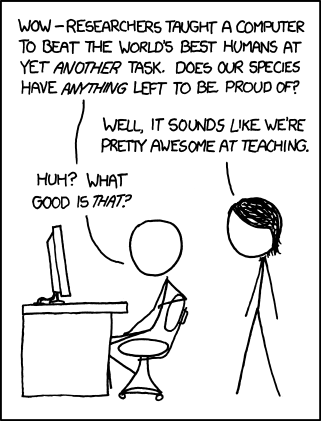Boston University posted the following video interviewing students about how hard it is to get an A. I love that one of the students is a former student of mine and comments about how you really have to do your work and do it right. The students reflect about how grades at BU are tough to get and how that affects them.
Boston University is one of the toughest schools to get an A at based on a CBS article (also see this). I can’t speak for all the departments (I can’t really speak for mine either), but the chemistry department is a tough place to get an A. I often write recommendation letters for students and have to explain that a B grade from us is likely an A grade in most anywhere else. I don’t feel BU has grade deflation either, assuming you adhere to the idea that C means average understanding.
While I think it is VERY important for grades to have meaning, it really is a double edged sword for a pre-med who has to compete against someone who is at a school with grade inflation. We really need to move to a mechanism where grades are accompanied with information about how the student compares to others in the class and historically.
UPDATE – (5/31/2012) The Boston Globe had an article back in 2010 entitled “Praising the low grade for a harder course“ Not only should A mean something, but we shouldn’t be upset when a student gets a B or a C. Here is a great quotation from the article.
Year after year, I’m seeing more “perfect’’ 4.0 grade point averages, and plenty just short of the 4.0 mark. To be clear, that means getting a grade of A or close to it in every course a student takes, regardless of his or her major. I don’t recall in my college days having peers with such intellectual multi-dexterity, but that was ages ago. Are today’s undergraduates smarter, harder working, and more talented than we were back then?
We need to ratchet down the arms race for having the highest GPA, so students are more willing to take a tougher course.

 This morning on
This morning on 

 Nobel prize winner in physics, Dr. Carl Wieman recently published an article in Science (10.1126/science.1201783) titled “Improved Learning in a Large-Enrollment Physics Class” that has gotten some serious press, including the quotation above. Dr. Wieman is a big proponent of active engagement in class. Dr. Wieman’s team reports that students in an introductory college physics course did especially well on an exam after attending experimental, collaborative classes during the 12th week of the course. By contrast, students taking the same course from another instructor — who did not use the experimental approach and continued with lectures as usual — scored much lower on the same exam.
Nobel prize winner in physics, Dr. Carl Wieman recently published an article in Science (10.1126/science.1201783) titled “Improved Learning in a Large-Enrollment Physics Class” that has gotten some serious press, including the quotation above. Dr. Wieman is a big proponent of active engagement in class. Dr. Wieman’s team reports that students in an introductory college physics course did especially well on an exam after attending experimental, collaborative classes during the 12th week of the course. By contrast, students taking the same course from another instructor — who did not use the experimental approach and continued with lectures as usual — scored much lower on the same exam.